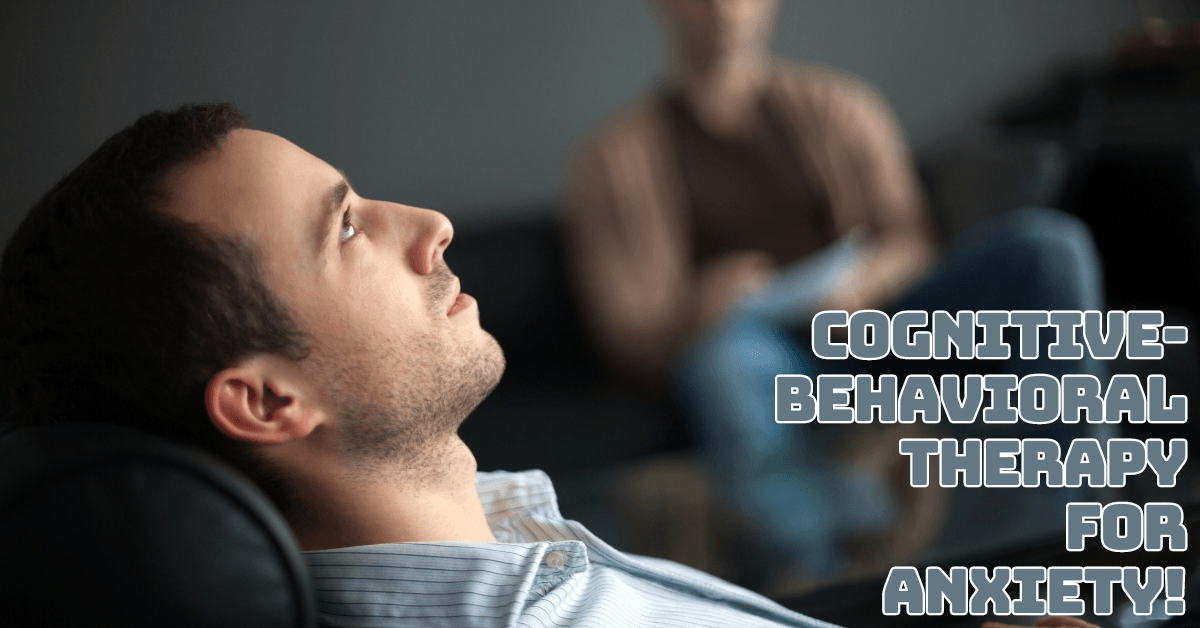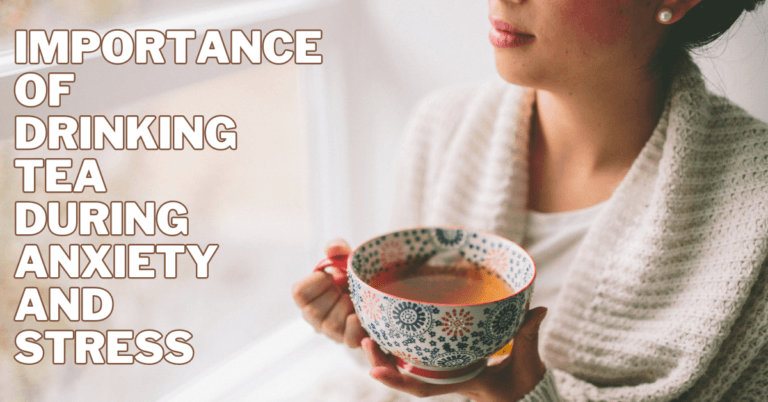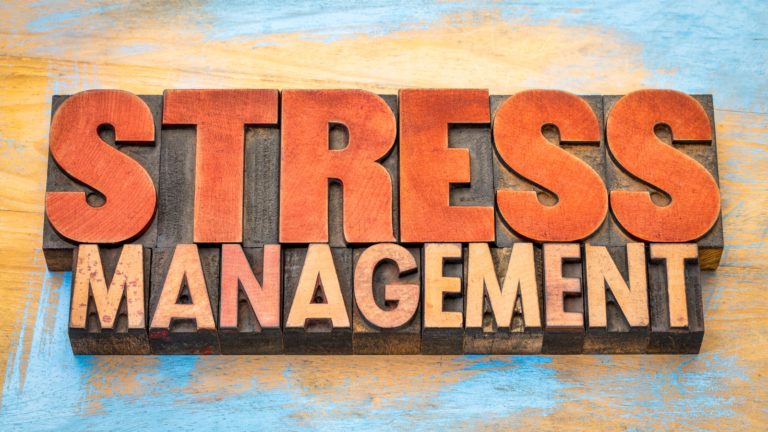Cognitive-Behavioural Therapy For Anxiety
Cognitive-Behavioural Therapy For Anxiety
Cognitive-behavioural therapy for anxiety has emerged as a leading treatment, offering a structured approach to help individuals understand and manage their symptoms.
By identifying negative thought patterns and behaviours, CBT empowers clients to challenge their anxieties and develop healthier coping strategies.
This evidence-based therapy combines cognitive restructuring with practical skills, making it a versatile and effective option for those seeking relief from anxiety. In this article, we’ll explore how CBT works and its benefits for anxiety management.
What Is Cognitive-Behavioural Therapy (CBT)?
Cognitive-behavioural Therapy (CBT) is a structured, time-limited psychotherapeutic approach designed to help individuals understand and change their thought patterns and behaviours.
Developed in the 1960s by psychologist Aaron T. Beck, CBT is founded on the assumption that our thoughts, emotions, and behaviours are interrelated.
By identifying and challenging negative or distorted thoughts, individuals can alter their emotional responses and behaviours, leading to improved mental health.
CBT involves several key components: cognitive restructuring, exposure therapy, and skill-building. Cognitive restructuring helps people identify and reframe negative thoughts with more realistic and productive ones.
Exposure therapy, often used for anxiety disorders, gradually exposes individuals to feared situations in a controlled manner, helping them build resilience and reduce avoidance behaviours.
The therapy is collaborative, with therapists and clients working together to set specific goals and monitor progress. CBT is usually short-term, ranging from a few weeks to several months, making it a practical option for many seeking quick relief from mental health issues.
Research shows CBT to be effective for a variety of conditions, including anxiety disorders, depression, PTSD, and OCD. Its structured approach helps reduce symptoms and equips individuals with lasting skills to manage future challenges.

How CBT Works For Anxiety
Cognitive-behavioural therapy for anxiety is a highly effective treatment that focuses on the interplay between thoughts, feelings, and behaviours. Here’s how CBT works to alleviate anxiety:

1. Identifying Negative Thought Patterns
CBT begins by helping individuals recognize their automatic negative thoughts (ANTs), which often contribute to anxiety.
These thoughts can include catastrophic thinking—where one imagines the worst possible outcome—overgeneralization, which involves making broad conclusions based on limited experiences, and all-or-nothing thinking, where situations are viewed in black-and-white terms.
2. Challenging Distorted Thoughts
Once negative thoughts are identified, CBT encourages individuals to challenge and reframe them. This process involves evaluating their validity by examining evidence for and against them. Clients are guided to consider alternative viewpoints and think critically about their beliefs.
3. Behavioural Activation
Cognitive-behavioural therapy for anxiety emphasizes changing behaviours that reinforce anxiety through techniques like exposure therapy, which helps individuals gradually confront and manage their fears.
This involves gradually confronting feared situations in a safe and controlled manner, allowing individuals to face their fears step by step.
By engaging with their anxiety triggers, clients learn that their fears are often exaggerated and manageable. This process reduces avoidance behaviours and builds confidence and resilience over time.

4. Skill Development Process
Through CBT, people can better manage their anxiety in daily life by learning useful coping mechanisms. These abilities could include mindfulness exercises encouraging in-the-moment awareness, relaxing methods like progressive muscle relaxation or deep breathing, and problem-solving strategies that help clients navigate stressful situations.
5. Goal Setting And Monitoring
Throughout the CBT process, therapists work collaboratively with clients to establish specific, achievable goals related to managing their anxiety. In addition to offering guidance, this systematic approach promotes accountability and incentives.
Clients are encouraged to monitor their progress regularly and reflect on their achievements and setbacks. This ongoing evaluation helps reinforce a sense of accomplishment and encourages individuals to stay engaged in their therapeutic journey.
6. Building Resilience
Cognitive-behavioural therapy for anxiety fosters resilience by helping individuals understand their triggers and responses to anxiety.
As clients learn to recognize and challenge negative thought patterns, they develop greater self-awareness and emotional regulation skills. This process equips them to cope with future challenges more effectively, enhancing their adaptability.

7. Understanding The Anxiety Cycle
CBT helps individuals identify the anxiety cycle, which consists of a trigger followed by negative thoughts, emotional responses, and behaviours, often leading to avoidance.
By recognizing this pattern, individuals can understand how their thoughts and behaviours perpetuate their anxiety. Since it enables clients to take action at different times, confront their worries, and lessen the hold that anxiety has over their lives, this awareness is essential to ending the cycle.
8. Mindfulness And Relaxation Techniques
Many CBT practitioners incorporate mindfulness and relaxation techniques to help clients manage anxiety. These practices, such as deep breathing exercises, progressive muscle relaxation, and guided imagery, promote present-moment awareness and calmness.
Individuals can alleviate symptoms like rapid heartbeat and shallow breathing by focusing on physical sensations and grounding themselves.
9. Homework Assignments
Homework assignments play a vital role in CBT, reinforcing lessons learned during therapy sessions. Clients may be encouraged to keep a thought diary to track their negative thoughts and feelings, engage in exposure exercises to confront their fears or practice newly learned skills in real-world scenarios.
10. Cognitive Restructuring
One important part of cognitive behavioural therapy (CBT) is cognitive restructuring, which focuses on recognizing and correcting cognitive distortions like catastrophizing or downplaying the positive.
Clients acquire the ability to identify these unfavourable thought patterns and methodically challenge their veracity. This shift fosters a balanced outlook, reduces anxiety, and promotes healthier thought processes in daily life.
11. Relapse Prevention
As therapy concludes, CBT emphasizes the importance of developing a relapse prevention plan. Clients learn to identify early warning signs of anxiety, equipping them with proactive strategies to manage potential setbacks.
This preparation helps individuals apply the skills acquired throughout therapy, fostering resilience and ensuring they remain equipped to handle future challenges effectively.

12. Supportive Environment
Cognitive-behavioural therapy for anxiety relies on a therapeutic relationship built on collaboration and support. Thanks to therapists, patients can explore their feelings in a safe and trustworthy environment without worrying about criticism.
This atmosphere encourages openness, allowing clients to confront their fears and vulnerabilities. Feeling supported makes individuals more likely to take risks and engage in the therapeutic process, enhancing their progress.
13. Empowerment Through Self-Reflection
CBT promotes self-reflection and self-awareness, helping individuals gain insights into their anxiety triggers and emotional responses.
This increased awareness empowers clients to take charge of their mental health, fostering a sense of control. As they understand their patterns, they build self-efficacy, enhancing their confidence in managing anxiety and applying learned skills in real-life situations.
14. Research-Backed Effectiveness
Numerous studies affirm the efficacy of CBT for treating anxiety disorders, establishing it as a gold standard approach. According to research, it helps with illnesses like particular phobias, generalized anxiety disorder, social anxiety disorder, and panic disorder.
Its structured, evidence-based methods contribute to widespread acceptance among mental health professionals, making it a trusted option for individuals seeking relief from anxiety.
Why CBT Is Effective For Anxiety
Cognitive-behavioural Therapy (CBT) is widely recognized as an effective treatment for anxiety due to its structured, evidence-based approach.
This therapy empowers clients to identify and challenge negative thought patterns, develop coping strategies, and foster resilience, making it a powerful tool for achieving lasting mental well-being.

1. Structured Approach
CBT offers a systematic framework that helps individuals navigate their anxiety. This organized method encourages clients to dissect their complex emotions into smaller, more manageable parts, such as identifying specific triggers and understanding the thought patterns that contribute to their anxiety.
By breaking down overwhelming feelings, clients can pinpoint what situations or thoughts exacerbate their anxiety. It is simpler for clients to understand the causes of their stress and implement practical coping skills when there is clarity, which facilitates targeted conversation and intervention during treatment sessions.
2. Focus On Thought Patterns
A foundational principle of CBT is the belief that thoughts significantly influence emotions and behaviours. Thanks to this relationship, clients can better identify and confront harmful thought patterns like all-or-nothing thinking and catastrophizing.
By bringing awareness to these cognitive distortions, clients can learn to reframe their thoughts, replacing negativity with more balanced and rational perspectives.
This cognitive restructuring not only alleviates anxiety but also promotes healthier emotional responses. As clients practice this skill, they gain insight into how their thinking affects their feelings, improving emotional regulation and resilience.
3. Skill Development
CBT is not just about understanding thoughts and emotions. It also focuses on equipping clients with practical skills for real-world application.
Techniques like relaxation exercises, mindfulness practices, and problem-solving strategies are integral to CBT. These skills enable clients to manage anxiety proactively in everyday situations.
For instance, mindfulness helps clients stay present and reduce overwhelming feelings, while relaxation exercises can alleviate acute anxiety symptoms.
By applying these methods in their daily lives, people enhance their coping abilities, build resilience, and learn to face stressors confidently and competently.

4. Goal-Oriented
CBT's collaborative and goal-oriented nature sets it apart from other therapeutic approaches. Clients work closely with therapists to establish specific, achievable objectives, fostering a sense of ownership over their progress.
This structured goal-setting process enhances motivation, as clients can see tangible outcomes of their efforts. Clear goals guide therapy sessions, allowing clients and therapists to track progress effectively.
Celebrating small successes reinforces clients' commitment to the process, ultimately contributing to a sense of accomplishment and enhanced self-efficacy in managing anxiety.
5. Evidence-Based
Cognitive-behavioural therapy for anxiety is rooted in extensive research and clinical evidence demonstrating its effectiveness in treating various anxiety disorders.
This evidence-based nature reassures clients that they are engaging in a scientifically validated treatment, which can enhance their trust in the therapeutic process.
Client confidence and willingness to fully participate in treatment might increase when they know CBT has been well-researched and proven to provide positive results. This research also helps therapists tailor interventions based on proven strategies that align with clients' needs.
6. Short-Term And Time-Limited
Many CBT programs are designed to be short-term, often lasting a few weeks to a few months. This time-limited structure allows clients to experience relief from their symptoms relatively quickly while acquiring lifelong coping skills.
The focused nature of CBT promotes the efficient use of therapy sessions, enabling clients to address specific concerns without prolonged commitment.
This brief duration can be particularly appealing for individuals who may feel overwhelmed by long-term therapy. Additionally, the short-term aspect encourages clients to stay engaged, knowing they can achieve significant progress in a manageable timeframe.

7. Emphasis On Empowerment
CBT empowers clients by encouraging them to participate actively in their treatment journey. By teaching individuals various tools and strategies for managing anxiety, CBT fosters a sense of self-efficacy and independence.
Clients learn to recognize their triggers, apply coping mechanisms, and challenge negative thoughts, all of which contribute to greater autonomy in handling their anxiety.
This empowerment is crucial for building resilience, as clients realize they can influence their emotional states and reactions. Ultimately, this active participation enhances their confidence in navigating future challenges.
8. Prevention Of Relapse
Towards the conclusion of CBT, there is a significant focus on relapse prevention. Clients are taught to identify early warning signs of anxiety and develop strategies to apply their learned skills proactively. This proactive approach helps sustain progress made during therapy, reducing the likelihood of setbacks.
By preparing clients to recognize potential triggers and respond effectively, CBT instils a sense of preparedness and resilience.
Clients leave therapy not only equipped with coping strategies but also with a mindset geared towards ongoing self-care and vigilance in managing their mental health long after the therapy sessions conclude.
9. Supportive Therapeutic Relationship
Cognitive-behavioural therapy for anxiety relies on a collaborative and supportive relationship between therapist and client to enhance treatment effectiveness.
This safe space allows clients to explore their fears, vulnerabilities, and experiences openly. The trust established within this therapeutic alliance enhances the efficacy of the treatment, as clients feel comfortable sharing their struggles and insights.
A supportive environment encourages open dialogue and feedback, essential for personal growth and change. As clients feel validated and understood, they become more willing to engage in the therapeutic process, ultimately leading to more meaningful outcomes and a deeper understanding of their anxiety.
10. Versatility
Because of its great adaptability, CBT enables therapists to customize their approach to each patient's specific needs. This adaptability is essential for addressing a variety of anxiety disorders and personal challenges.
Therapists can customize interventions based on clients' specific experiences, preferences, and goals, ensuring that the therapy remains relevant and effective.
This personalized approach enhances the therapeutic process as clients receive strategies and techniques that resonate with them.
CBT's versatility ensures that clients can engage in therapy tailored to their situations, leading to improved outcomes and satisfaction with the treatment.

11. Holistic Understanding
CBT embraces a holistic perspective by examining the interconnectedness of thoughts, emotions, and behaviours. With this all-encompassing approach, therapists can look into the root causes of anxiety in addition to its symptoms.
By understanding how these elements influence one another, therapists can create targeted interventions that address root issues rather than merely alleviating surface-level distress.
For example, a client’s negative thoughts may be linked to emotional responses and specific behaviours. Therapists can guide clients toward sustainable changes by exploring these connections, leading to more effective and long-lasting anxiety management strategies.
12. Encouragement Of Healthy Lifestyle Choices
Cognitive-behavioural therapy for anxiety promotes overall mental well-being by emphasizing the importance of healthy lifestyle choices.
Clients should incorporate regular exercise, a healthy diet, and proper sleep hygiene into daily routines. These lifestyle factors are highly relevant to mental health due to their direct effects on mood, energy levels, and stress resilience.
According to studies, regular exercise releases endorphins, which have been shown to improve mood and lessen symptoms of anxiety.
By fostering these healthy habits, CBT enhances the effectiveness of therapy and empowers clients to take charge of their overall well-being, contributing to a healthier lifestyle.

13. Use Of Homework
Cognitive-behavioural therapy for anxiety incorporates homework assignments as a fundamental component to reinforce concepts and skills learned during therapy sessions.
These assignments encourage clients to practice new techniques and strategies in real-world situations, bridging the gap between therapy and everyday life.
By engaging with the material outside of sessions, clients can internalize their learning, making it more likely that they will apply these skills independently.
For instance, a client might be instructed to keep a journal of their feelings and ideas or, in times of stress, to practice relaxation techniques.
This active engagement solidifies their understanding and fosters a sense of responsibility for their progress, enhancing the therapeutic experience.
FAQ
1. What Types Of Anxiety Disorders Can CBT Treat?
Answer: Cognitive behavioural therapy is an effective way to treat anxiety disorders such as panic disorder, social anxiety disorder, generalized anxiety disorder (GAD), and specific phobias (CBT). Its versatility allows therapists to tailor approaches to individual needs.
2. How Long Does CBT Typically Last?
Answer: Many CBT programs are short-term, usually 6 to 20 sessions, depending on the individual’s needs and goals. This time-limited nature allows clients to achieve significant progress relatively quickly.
3. Are There Any Side Effects Or Risks Associated With CBT?
Answer: CBT is generally considered safe, with few side effects. Some clients may initially feel uncomfortable when confronting their fears or discussing difficult emotions. However, these feelings often decrease as therapy progresses.
4. How Does CBT Differ From Medication For Anxiety?
Answer: While medication can help alleviate symptoms of anxiety, cognitive-behavioural therapy for anxiety addresses the underlying thought patterns and behaviours contributing to anxiety. Many individuals find that combining therapy with medication yields the best results.
Conclusion
In conclusion, cognitive-behavioural therapy (CBT) provides a structured and effective approach to managing anxiety by addressing the interplay between thoughts, emotions, and behaviours.
Concentrating on both short-term solutions and long-term planning, CBT equips clients with tools to navigate their anxiety and enhance overall well-being.
CBT alleviates symptoms and promotes lasting resilience and self-efficacy by fostering a supportive therapeutic relationship.
I trust you enjoyed this article on Cognitive-Behavioural Therapy For Anxiety. Please stay tuned for more blog posts soon. Take care!
JeannetteZ
>>>Please click here to read my all-inclusive article about Lessons That Will Teach You All About Stress<<<
>>>Are you interested in Natural Healing And Stress Relief Through Herbs? Please click here for my #1 Recommendation<<<
Your Opinion Is Important To Me
Do you have thoughts, ideas, or questions? I would love to hear from you. Please leave me your questions, experiences, and remarks about this article, Cognitive-Behavioural Therapy for Anxiety, in the comments section below. You can also reach me by email at Jeannette@Close-To-Nature.org.
Disclosure
This post may contain affiliate links. I earn from qualifying purchases as an Amazon Associate and other affiliate programs. Please read my full affiliate disclosure.
You might also enjoy these blog posts:
How To Use Meditation For Better Sleep
Best Practices For Living A Life Of Gratitude
How Having A Pet May Change Your Life For The Better







